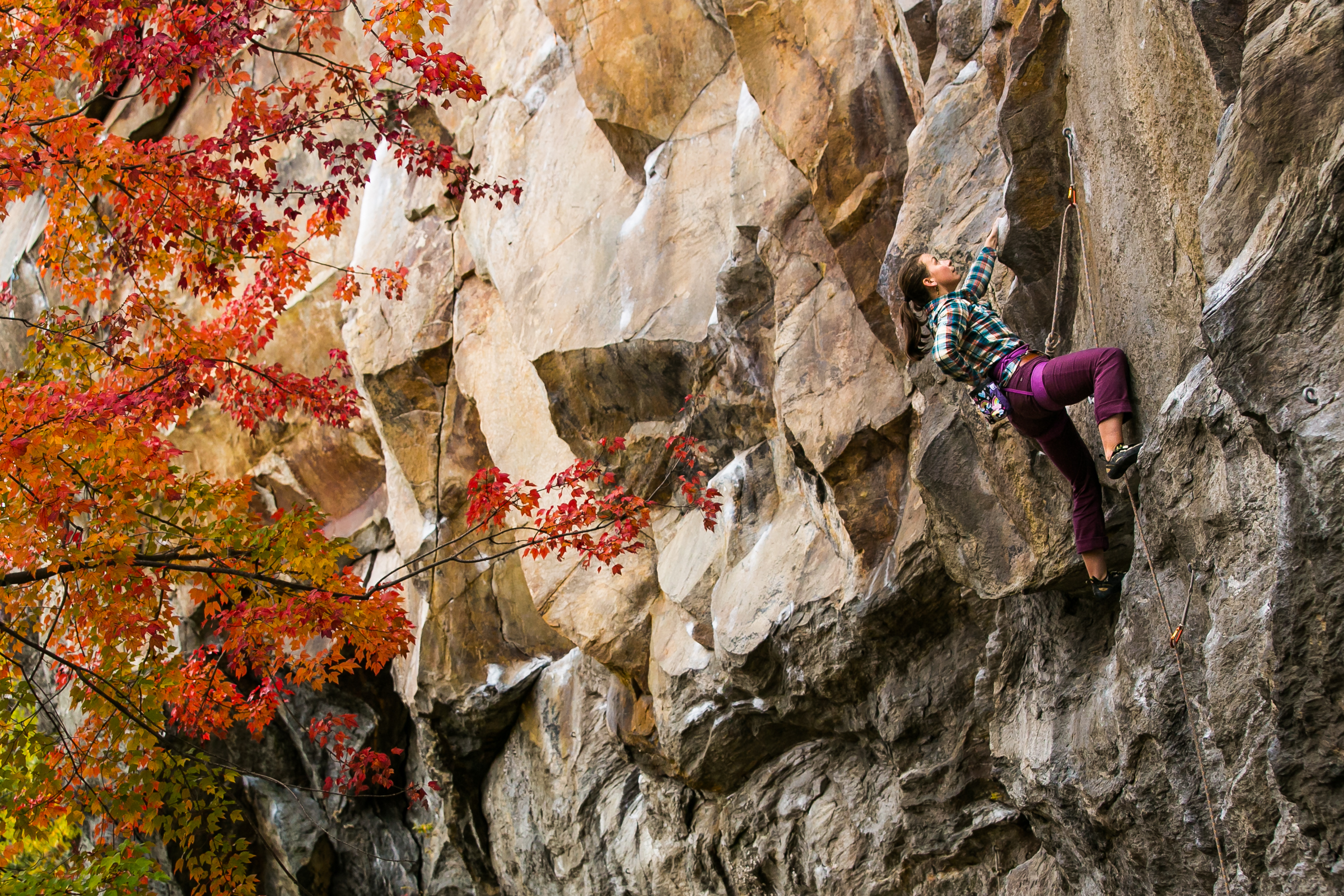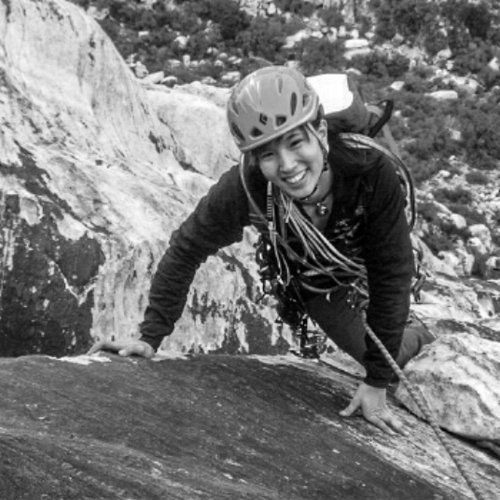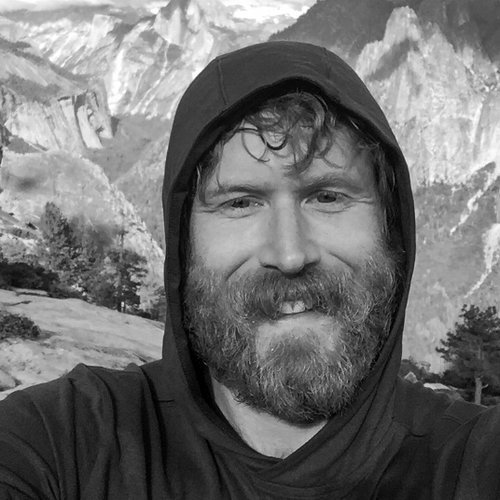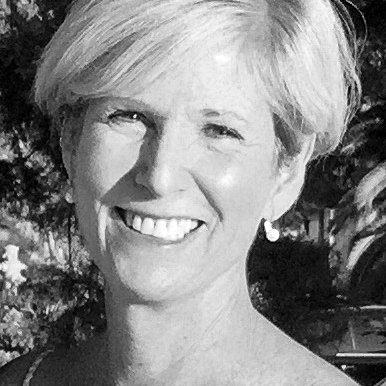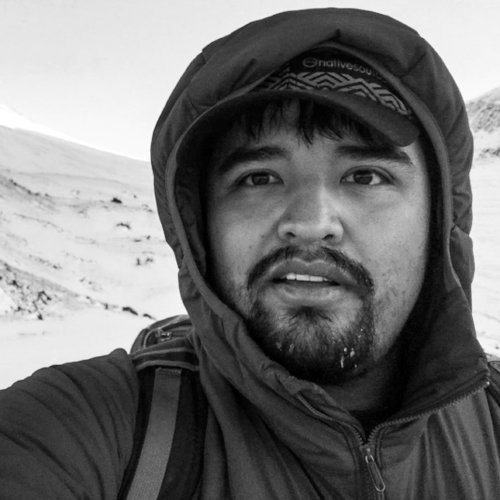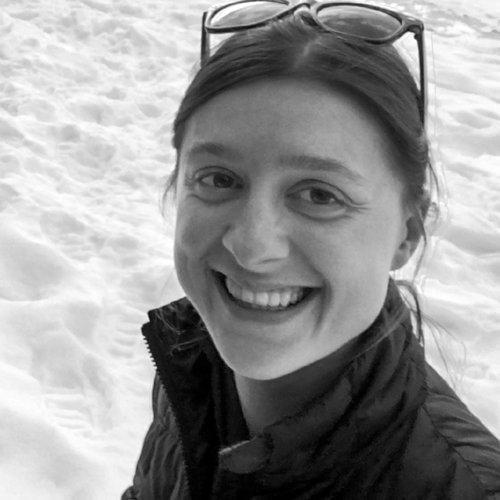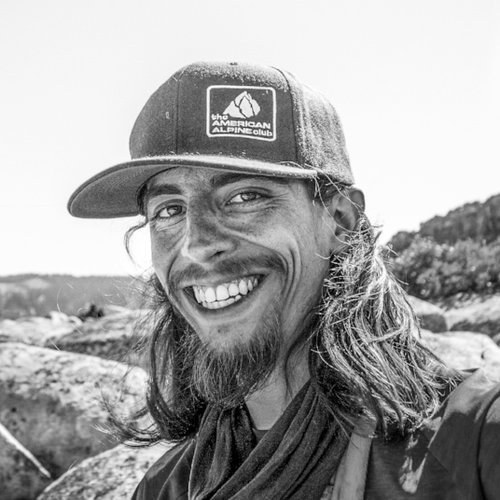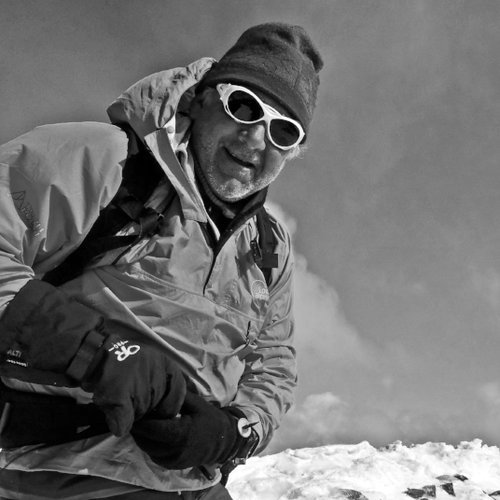2017 LIVE YOUR DREAM GRANT RECIPIENTS
The American Alpine Club and The North Face are pleased to announce the recipients of the 2017 Live Your Dream grant. In total, $69,750 was awarded to 144 recipients.
NORTHEAST REGION:
The Northeast Regional Selection Committee was chaired by Cliff Simanski. Committee members included Alexa Siegel, Howard Sebold, and TNF athlete Anna Pfaff.
Gregory Zegas: Charlestown, MA
$500 for two weeks in the Peruvian Cordillera Blanca with Catherine Tobin to acclimate in Huaraz before summit attempts of Mt. Pisco (18,871 ft) and Mt. Chopicalqui (20,846 ft).
Catherine Tobin: New Rochelle, NY
$500 for two weeks in the Peruvian Cordillera Blanca with Gregory Zegas to acclimate in Huaraz before summit attempts of Mt. Pisco (18,871 ft) and Mt. Chopicalqui (20,846 ft).
Pavel Cenkl: Craftsbury Common, VT
$750 for traversing the remote and mountainous terrain between Norway, Sweden, and Finland to attempt to set the fastest known time for a 12-day, 800km largely self-supported Arctic Trail Run of the Nordkalottleden while sharing evidence of a rapidly changing climate in the region and its effects on local indigenous Sami communities.
James Cromie: Chittenden, VT
$950 to travel to the Waddington Range in British Columbia and traverse the entire length of the Combatant-Tiedemann-Asperity-Serra group (including Serra 1-5) in fast and light alpine climbing style typical for the range.
Michael Dorfman: Bar Harbor, ME
$500 to develop mountaineering skills with Helen Jolley by attempting South Sister, Mount Saint Helens, Mount Adams, Mount Baker and culminating in a summit of Mount Rainier via Disappointment Cleaver.
Helen Jolley: Bar Harbor, ME
$500 to develop mountaineering skills with Michael Dorfman by attempting South Sister, Mount Saint Helens, Mount Adams, Mount Baker and culminating in a summit of Mount Rainier via Disappointment Cleaver.
Michael Wadsley: West Grove, PA
$500 to climb the 1000', 14 pitch Rainbow Wall in Red Rock, Nevada via the Original Route during a 9 day stay in Red Rock Canyon.
Adam Nawrot: Somerset, NJ
$800 to climb routes in the Polish Tatras, including Filar Staszla and ski down the backside Granaty.
Evan Pierce: Newton, MA
$450 for his breakthrough into alpine rock climbing by freeing a series of progressively more difficult routes culminating with an ascent of the incredible Hulk via the Red Dihedral route.
Thomas Crowe: Blue Hill, ME
$950 To embark on an expedition with Samuel Eley to the Mount Hayes and Mount Moffit mountains in the Eastern Alaska Range, southeast of Fairbanks, Alaska to attempt to climb the East Ridge of Mount Hayes and the Western North Ridge of Mount Moffit.
Samuel Eley: Portland, ME
$500 to embark on an expedition with Thomas Crowe to the Mount Hayes and Mount Moffit mountains in the Eastern Alaska Range, southeast of Fairbanks, Alaska to attempt to climb the East Ridge of Mount Hayes and the Western North Ridge of Mount Moffit.
Augustine McDermott: Homestead, PA
$200 as part of the McDermott family to climb for 4 weeks in the Niagara Escarpment in Ontario for 11 year old Augustine will finally have time to commit to projecting and acquiring the skills to stay focused on one objective.
Anastasia McDermott: Homestead, PA
$200 as part of the McDermott family to climb for 4 weeks in the Niagara Escarpment in Ontario for 9 year old Anastasia to climb a 5.10a that will challenge her to overcome her fears of ledges and intimidated roofs.
Magdalen McDermott: Homestead, PA
$200 as part of the McDermott family to climb for 4 weeks in the Niagara Escarpment in Ontario for 8 year old Magdalen to immerse herself in the outdoors and connect with nature through climbing, hiking, and swimming.
Catherine McDermott: Homestead, PA
$200 as part of McDermott family to climb for 4 weeks in the Niagara Escarpment in Ontario for 5 year old Catherine to build the fundamental skills of climbing and camping under the tutelage of her family.
Piers McDermott: Homestead, PA
$200 as part of McDermott family to climb for 4 weeks in the Niagara Escarpment in Ontario to learn about nature and grow his appreciation for the outdoors while connecting with family.
Cameron Twombly: Center Conway, NH
$200 to travel in Northeastern Spain, summit a few of the classic, tall, spires in Montserrat, to send her first 5.12 sport climb in Oliana, and to summit the 2500 meter peak Pedraforca.
Will Helmetag: Pawlet, VT
$950 to explore, via sailboat, Devil's Bay, Chaleur Bay, and Rencontre Bay with the objectives to climb Leviathan 5.10b and develop new trad routes on the most clear lines of these newly discovered walls.
Zack Sawyer: Scarborough, ME
$700 for two weeks of alpine climbingin Chamonix, France , with the ultimate goal of climbing the Trois Monts route up Mont Blanc, the south face of Aiguille du Midi, and The Voie Rébuffat-Baque.
Brian Taylor: Falmouth, ME
$500 to peak-bag his way through Wasatch National Forest in Utah with Ethan Cantlin over the course of three weeks specifically targeting Pfeifferhorn and Mt. Nebo.
Ethan Cantlin: Falmouth, ME
$500 to peak-bag his way through Wasatch National Forest in Utah with Brian Taylor over the course of three weeks specifically targeting Pfeifferhorn and Mt. Nebo.
David Migl: Brookline, MA
$450 to travel in a team of three to the Ishinca valley in Peru for 10 days of mountaineering with summits of Urus Este (5420m), Ishinca (5530m), and Tocllaraju (6031m).
Timothy Rabideau: Brookline, MA
$950 To spend a nine months in Nepal and while there, complete the Manaslu and/or Annapurna circuit, to traverse from Makalu to Everest via the 3 cols route, to summit at least one 6000 meter "trekking" peak, to connect with local climbing partners/guides and climb LOTS of rock and ice, with a focus on improving big wall free and aid climbing techniques, all contributing towards the ultimate goal of becoming a Mountain Guide.
Dante Archangeli: New Haven, CT
$800 for a redpoint attempt of the mixed sport and trad, 6 pitch route the Opal, 5.12d/13a in the South Gully of The Chief as part of a larger objective to test and develop climbing ability and trip management skills.
Gowri Varanash: Red Hook, NY
$400 to take down her project, French Indian Masala 7c/5.12d, the crimpy, technical sport route in Badami, India.
Josh Alcorn: New York, NY
$500 to travel to the Cascade Range in Washington State to develop his mountaineering skills on the North Ridge of Mt. Baker (10,781 ft).
Andrew Jones: Lincoln, VT
$400 to climb the Northeast Buttress of Goode Mountain in the North Cascades of Washington State in three days.
Owen Silitch: New York, NY
$500 to drive out to Yosemite and the High Sierra to hone his big-wall climbing skills on routes like The Prow and The Red Dihedral in preparation for climbing Lurking Fear on El Capitan.
Annie Coughlin: Philadelphia, PA
$500 to travel with Rory Coughlin to the Italian Dolomites and stay near the Campitello di Fassa and Cortina D'ampezzo areas while peak bagging classics like the Second and Third Sella Towers, The Vajolet Towers all in a day, and Cima Grande Di Laveredo via Comici-Dimai.
Rory Coughlin: Philadelphia, PA
$500 to travel with Annie Coughlin to the Italian Dolomites and stay near the Campitello di Fassa and Cortina D'ampezzo areas while peak bagging classics like the Second and Third Sella Towers, The Vajolet Towers all in a day, and Cima Grande Di Laveredo via Comici-Dimai.
Ryan Sarka: Buffalo, NY
$1000 for a splitboard and ski ascent and decent of the Western Buttress of Denali to further the mission of Between The Peaks and film a documentary focusing on local habitat and sustainability issues.
Henry Garcia: Brentwood, NY
$750 to establish a first ascent on the 2,600' west face of the 17,550' high peak, the Ritacuba Negro in Sierra del Cocuy, Colombian Andes.
Tristan Amaral: Warner, NH
$300 for a trip with Matthew Birkebak to climb three of North America's iconic mountains in the month of August: the Grand Teton (via Beyer East Face, III 5.9), South Howser Tower (Bugaboos, via the Becky-Chouinard,IV 5.10 as well as additional goals including NE ridge of Bugaboo Spire 5.8 and Sunshine Crack 5.11-), and Mt. Rainier (via Emmons Glacier Route) .
Matthew Birkebak : West Peterborough, NH
$300 for a trip with Tristan Amaral to climb three of North America's iconic mountains in the month of August: the Grand Teton (via Beyer East Face, III 5.9), South Howser Tower (Bugaboos, via the Becky-Chouinard,IV 5.10 as well as additional goals including NE ridge of Bugaboo Spire 5.8 and Sunshine Crack 5.11-), and Mt. Rainier (via Emmons Glacier Route) .
Garrett Gibbons: Philadelphia, PA
$400 to hone multi-pitch trad climbing skills on the epic granite of The Chief by climbinga variation of the Squamish Buttress known as the Squamish Butt Face via Banana Peel (5.7) and Boomstick Crack (5.6) into the crux pitch (5.9) to the summit.
James Armstrong: Olivebridge, NY
$1000 to reach the Cirque of the Unclimbables in Nahanni Provincial Park by fair means, navigating to the Cirque on foot, with no plane/helicopter ride with the goal of climbing Lotus Flower Tower and exploring new surrounding areas.
John Nicholas: Mount Kisco, NY
$500 to reach the summit of the highest point in the Cordillera Oriental sub-range, Ritacuba Blanco (17,749') in the Colombian Andes via its West Ridge with Ryan Lynch.
Ryan Lynch: Westford, MA
$500 to reach the summit of the highest point in the Cordillera Oriental sub-range, Ritacuba Blanco (17,749') in the Colombian Andes via its West Ridge with John Nicholas.
Nan Teh: Brooklyn, NY
$250 to attempt, with Mikhail Martin, to climb their first big wall multi-pitch in Cochamo Valley, specifically the 1,500' 10-pitch route El Filo La Aleta de Tiburon, 5.10+.
Mikhail Martin: Queens Village, NY
$250 to travel, with Nan Teh , to learn how to survive in the outdoors, on a big wall, and ascend El Filo La Aleta de Tiburon, while inspiring other climbers from the city, especially climbers of color to get out of their comfort zone, and practice Spanish in Chile.
Matthew Matera: New York, NY
$200 to climb and run through Chamonix, Zermatt, and several towns in the Dolomites, including Run the Dolomites Skyrace, a 3 day run of the Walker Haute Route from Chamonix to Zermatt to prepare for speed objectives including Mount Ritter, Mount Humphrey, and the Tuolumne Meadow Triple Crown in the Sierras in California.
Greg Morrissey: Westfield, NJ
$400 to bike from Vancouver, CA to Tijuana, Mexico and climb Mount Rainier and Mount Hood while raising awareness about the importance of outdoor education and fundraising for financially-restricted high school students to participate in adventure and travel enrichment trips.
Julia Lowd: Brooklyn, NY
$500 to summit the third highest point in North America , Pico de Orizaba and ski down 3,000' from the summit cone of the Jamapa glacier.
Jordan Cargill: Freedom, NH
$800 for a three phase trip to boost crack climbing skills in Vantage, WA, alpine efficiency on the East Face of Mount Whiteny and the North Fairview Dome, and high-altitude mountaineering with an ascent of Pico de Orizaba in Mexico via the Serpents Head route.
Domenic Aiello-Popeo: Silver Lake, NH
$600 to climb Alaska's Mt. Foraker (AKA Sultana, 17,400') via an extremely technical face called the "Fin Wall" and continue up the Southwest Buttress to the summit, traversing the peak and descending to the Kahiltna Glacier.
Patrick Cooke: Newtown, MA
$500 to travel to the Cordillera Blanca for a month and climb some classic high-altitude snow and ice routes in addition to some lesser traveled objectives like the south face of Caraz I and the Jaeger Route on Chacraraju Este.
Bob Clark: East Hartford, CT
$500 to travel to the township of Araruna in Brazil to establish two first ascents up two different domes between 500' and 600' tall.
Josh Garrison: Katonah, NY
$500 to put up first ascents on multiple formations in the Lofoten Islands in Norway while being a mentor to two friends who are new to alpine fast and light, pioneering objectives.
SOUTHEAST REGION:
The Southeast Regional Selection Committee was chaired by Danny McCracken. Committee members included Dave Giacomin, Brian Payst, and Garrett Gossett.
Aaron Ray: District Of Columbia
$435 to travel to Bolivia to attempt multiple peaks in the Cordillera Real, centered on the Condoriri group and Illiman.
John Gannon: Fairfax, Virginia
$265 to attempt to summit Mount Rainier via the Emmons Glacier route unguided with a group of veterans.
Michelle Xue: District Of Columbia
$320 to climb Nevado Sajama (21,486 ft) and Parinacota (20,767 ft) in June of 2017 with a team of 3 other climbers.
Matt Swaim: Charlotte, North Carolina
Timothy Fry: Belmont, North Carolina
$270 for Matt and $535 for Timothy to navigate the remote, difficult terrain of the Nahanni National Park by foot travel only.
Sam England: Huntsville, Alabama
Ryan Little: Huntsville, Alabama
$435 for Ryan and $570 for Sam to the Sam Ford Fjord region of Baffin Island to attempt a first ascent big wall climb of the Chinese Wall, a large, unclimbed face.
Corey Winstead: Asheville, North Carolina
$520 to further explore the nearly untouched Thunderdome massif in the Ragged Range of the Northwest Territories.
Alex Elizabeth Barringer: Harrisonburg, Virginia
$300 to climb Wolf's Head via its east ridge.
Lindsay Keegan: Baltimore, Maryland
$300 to climb the classic Liberty Ridge of Mount Rainier in Washington.
John Hughes: District Of Columbia
$200 to climb Mount Jefferson via the Whitewater Glacier route and Mount Rainier via the Emmons Glacier route.
Greg Barltrop: Baltimore, Maryland
$280 to climb the Liberty Ridge route to the summit of Mt. Rainier in Washington state.
Phillip Jasper: District Of Columbia
$200 to attempt a back to back climbs of Mt. Jefferson, OR via the Whitewater Glacier as well as travel up to Mt. Rainier and summit via Emmons Glacier.
Matthew Wikswo: Harrisonburg, Virginia
$270 to attempt a self-guided ascent of Mount Rainer via Ptarmigan Ridge.
Oya Bermek: Cary, North Carolina
$350 to open new alpine routes in Aladaglar (Ala Mountains), which is located at the mountain range of Toros (Taurus) Mountains in southern Turkey.
CENTRAL REGION:
The Central Regional Selection Committee was chaired by James Schroeder. Committee members included Ryan Gajewski, Adam Mitchell, Savannah Buik, and Ryan Maitland.
Samuel Daulton: Chicago, IL
$1,000 to make the first free ascent of Nubivagant (5.13d A0) and the volcanic tower, Pico Cão Grande, on the island nation of São Tomé in Africa.
Adam Happensack: Englewood, OH
$1,000 to fly into the southern prong of the Pitchfork Glacier in Alaska's Neacola Mountains - there they hope to explore and make the first ascent of a pair of unnamed peaks.
Corey McCarthy, Oconomowoc, WI
$750 to do a sea-to-summit expedition in Alaska approaching the Devil's Thumb via Thomas Bay and the Baird Glacier.
Carey deVictoria-Michel: Excelsior, MN
$500 to travel to Patagonia to climb Chiaro Di Luna (5.10+) - a twenty-pitch alpine rock adventure.
Lucy Westlake: Naperville, IL
$500 to become the youngest female to summit the highest points in all fifty states, she will complete that journey this summer on the flanks of Denali.
Edward Kowalski: Independence, OH
$250 to fulfill a lifelong dream of climbing Yosemite's, El Capitan, via Tangerine Trip (5.9 C3+ VI).
ROCKY MOUNTAIN REGION:
The Rocky Mountain Regional Selection Committee was chaired by Dakota Walz. Committee members included Mitch Dorsk, Shingo Ohkawa, and Steve Taylor.
Kelly Stewart: Salt Lake City, UT
$375 to climb the Beckey Chouinard route on South Howser Tower in the Bugaboos.
Aidan Goldie: Jamestown, CO
$400 to climb and ski off the 18,490 ft Pico de Orizaba volcano in Mexico.
Paul Barish: Leadville, CO
$850 to climb 2,000' south-east face of Lotus Flower Tower, a pure and aesthetic alpine rock route that just beckons to be climbed.
Ryan Kuehn: Boulder, CO
$425 to travel down to Chile to climb in Valle Cochamo.
Lea Linse: Colorado Springs, CO
$350 to travel to Yosemite NP and climb Astroman (5.11), Steck-Salathe (5.10), and hopefully either the Nose (5.9 C2) or Lurking Fear (5.7 C2) on El Capitan
Michael Riley: Sat Lake City, UT
$500 to travel to San Carlos de Bariloche, Argentina to climb Objectivo Luna, an 8 pitch 5.10c route.
Michael Scott: Salida, CO
$200 to travel to the Alaskan range to attempt the Harvard Route on Mt. Huntington.
Annie Brewster: Denver, CO
$500 to ski first descents in the Wrangell St. Elias Range in Alaska.
Igor Tomcej: Denver, CO
$380 to travel to Peru and do the second ascent of the route Los Checos Banditos on La Esfinge.
John Sittler: Boulder, CO
$200 to climb the Beckey-Chouinard route on South Howser Tower as the culmination of a month-long climbing road trip.
Kevin Cantwell: Salt Lake City, UT
$350 to climb All Along the Watchtower, 5.11 C2- on North Howser Tower in the Bugaboos, located in British Colombia, Canada.
Mitchell Hodge: Fort Collins, CO
$300 to attempt 1 route on the North Face of the Lost Twin Lakes Cirque in Cloud Peak Wilderness of Bighorn National Forest WY.
Ben Peters: Salt Lake City, UT
$770 to climb the British Route (5.12 a/b 700m) on Nalumasortoq and War and Peace (5.12c 1000m) on Ulamertorsuaq and attempt to establish a new line on the west of Nalumasortoq.
Matt Berry: Salt Lake City, UT
$800 to technical climb routes on peaks such as Alpamayo, Tocllaraju, Artesonraju, and Taulliraju of Peru.
Ellie Gilbertson: Colorado Springs, CO
$500 to ski first descents in the Wrangell St. Elias Range in Alaska.
Karen Bockel: Jackson, WY
$825 to climb the Peuterey Integral on Mont Blanc, one of the longest alpine ridge climbs in the Alps, and the world.
Kelsey Brasseur: Carbondale, CO
$775 to spend a month climbing and establishing new routes in Li Ming, China.
NORTHWEST REGION:
The Northwest Regional Selection Committee was chaired by Erin Schneider. Committee members included Andrew Puhl, Graham Zimmerman, Jean Spencer, and TNF athlete Peter Athans.
John Bergeleen: Cheney, WA
$300 to climb of the Upper Exum Ridge, or Exum Direct on the Grand Teton.
James Paul Blackmon: Seattle, WA
$300 to climb Mongo Ridge – the southwest ridge of Mt. Fury in the Pickets range of Washington State, and a first ascent on the Pole of Remoteness, which will be called "Mongo Direct".
Cameron Brown: Clackamas, OR
$300 to climb The Salathe Wall and The Nose on El Capitan.
Paul Calabro: Belgrade, MT
$300 for a lightweight ascent of the Infinite Spur on Mt. Foraker (Sultana) in the Alaska Range.
Tom Chambers: Seattle, WA
$300 to climb one or more routes in the vicinity of Peak 1939, up to Grade V with climbing difficulties up to 5.10 A1. Access to the routes would involve sea kayaking approx. 60km North from Kulusuk up the Angmagssalik fjord to the North-West inlet of Qigertivaq. From the coast we would hike approx 12km to the base of the route.
Kimberly Couri: Seattle, WA
$500 to climb Ama Dablam in Nepal. The expedition will consist of three female climbers from Seattle.
Bill Dean: Juneau, AK
$400 to support a solely human-powered unassisted exploration into remote Alaska, during winter, attempting the first winter ascent of Devil's Paw (8,504').
Eric DeChaine: Bellingham, WA
$300 to perform a botanical survey of Mt. Waddington in British Columbia, to document how plant diversity changes with elevation under the current climate conditions. To do so, they will climb the mountain via the Bravo Glacier route.
Stephen Lezak: Portland, OR
$500 to travel to Mongolia for ski mountaineering in the Altai Mountains with one first ascent.
Sam Linnet: Hailey, ID
$300 to climb and ski all seven, 12,000 foot peaks in the Lost River Range in Idaho in one, fast and light push.
Nicholas Lyon: Bellingham, WA
$400 to wrap up a handful of two year old projects and establish new bouldering problems in classic and new areas alike in Rocklands, South Africa.
Tammy Martin: Seattle, WA
$500 to climb Ama Dablam in Nepal. The expedition will consist of three female climbers from Seattle.
Luke Montgomery: Seattle, WA
$300 to climb the East Buttress and East Face of Mt. Whitney.
Chris Mutzel: Sun Valley, ID
$400 to complete the Waddington Traverse.
David Norris: Anchorage, AK
$300 to ski across the Harding Icefield on cross-country racing gear- starting in Seward and ending in Homer, Alaska.
Joseph Peters: Spokane, WA
$400 to climb the Cassin Ridge (Alaska Grade 5, 5.8, AI 4) in a single push alpine style after acclimating on the West Buttress of Denali.
Randall Stacy: Boise, ID
$400 to climb in the Chalten Massif in Patagonia – specifically Fitz Roy and Cerro Torre.
Kellie Standish: Bend, OR
$500 to climb and ski Mt. Hood, acting as support for teammate Anna Soens, also awarded a LYD grant, seeking to become the first female paraplegic to climb and ski Mt. Hood.
Erik Turner: Seattle, WA
$300 to complete the Olympic Skyline Traverse in the Olympic Mountains, WA.
Ida Vincent: Seattle, WA
$500 to climb Ama Dablam in Nepal. The expedition will consist of three female climbers from Seattle.
WESTERN REGION:
The Western Regional Selection Committee was chaired by Matt Ulrey. Committee members included Laurie Berliner, Tony Yeary, Paul Hendricks, TNF athlete Dave Allfrey, and TNF staff member Rachel Gray.
Jeff Gardner: Coronado, California
$750 to climb and summit Mount Rainier by way of the technically demanding Kautz Glacier approach with an advanced course from Alpine Ascents International.
Scott Larson: San Diego, California
$750 to climb the West Rib route on Denali. We will ski to 14000 ft camp via the West Buttress route, then descend via the "Seattle '72 Ramp" on foot to the base of the West Rib. From here, they hope to climb the West Rib to the summit and return down the West Buttress to our skis.
Marisa Earll: La Jolla, California
$350 to travel to the Wind Rivers and lead five, 5.10 routes on 5 of the most prominent and spectacular formations in the Cirque of Towers and Deep Lake.
Kenneth Huskey: Chico, California
$750 to document the Nepali people's experience with climate change while we simultaneously level up their climbing.
Kara Herson: Redwood City, California
$1000 to climb three different spires in the Bugaboos, and exploring the amazing climbing opportunities (and hoping for good weather days) over 2 to 3 weeks.
Diana Wendt: Mammoth Lakes, California
$1000 to spend a month in the Tasermiut Fjord in southeast Greenland in the valley below Ulamertorsuaq climbing the classic granite lines and establishing a new line.
Josh Dibble: Idyllwild, California
$750 to climb Aconcagua solo via the normal route.
Brett Webster: Piedmont, California
$750 to attempt a multi-modal (boat, ski, hike, climb) traverse of Mt. Fairweather, Alaska.
Alix Morris: Bishop, California
$500 to establish a first ascent up the Angel Wings with the intent of free climbing this route as well. Alix would like to go ground up, capsule style establishing each pitch, fixing it with hardware, and free'ing it if possible.
David Whiting: Soquel, California
$250 to climb three Zion big walls in three days. The plan is to climb some of Zion's most classic walls: Spaceshot, Moonlight Buttress, and Touchstone.
Cris Valerio: San Francisco, California
$200 to climb The Nose on El Capitan this Fall. We hope to finish the route in 3-5 days with a combination of free climbing and aid climbing.
Mark Hudon: Carson City, Nevada
$500 to climb Freerider on El Cap in Yosemite at the youthful age of 61!
John Greer: Modesto, California
$750 to make the first ascent of Talliktok, a peak in the Hidden Mountains. Zack Clanton described his Alaskan adventure in the 2016 AAJ publication.
Mac McCaleb: Prescott, Arizona
$200 to summit three peaks in the Bugaboos: Snowpatch Spire, Pigeon Spire, and Bigaboo Spire.
Gregory Carlisle: Tahoe City, California
$500 to return with a dedicated partner and attempt some of the classic summits of the Chalten Massif. Routes they have considered are not groundbreaking or new, but classic and traditional Patagonia summits.
Nathan Duray: Flagstaff, Arizona
$500 to visit the Cirque of the Unclimbables and free climb Lotus Flower Tower in a push.
Kevin Kent: Flagstaff, Arizona
$500 to visit the Cirque of the Unclimbables and free climb Lotus Flower Tower in a push.
Clarence Thost: Santa Barbara, California
$300 to climb all the Sierra 14ers in one thru-hike. The entire journey is approximately 80 miles on the map and will have a total gain and loss of 36,000 to 40,000+ feet.
Catherine Tao: Bishop, California
$400 to gain experience in basic mountaineering and glacier travel skills by attempting the summits of Dragontail Peak and Colchuck Peak in the Enchantments in Washington.
Darrow Feldstein: Santa Cruz, California
$300 to climb all the Sierra 14ers in one thru-hike. The entire journey is approximately 80 miles on the map and will have a total gain and loss of 36,000 to 40,000+ feet.
Annie Laurie Hines: Davis, California
$200 to undertake a granite pilgrimage that begins in the Cascades and ends in the Bugaboos. Though they will spend a month climbing together in preparation, their final objective is a two-day ascent of the Beckey-Chouinard Route on South Howser Tower.
Erik Hanschen: Tucson, Arizona
$500 to become a better mountaineer and hone his skills for larger adventures by summiting three major Cascade volcanoes: Mt. Rainier, Mt. Adams, and Mt. Hood.
Gregory Powell: Redondo Beach, California
$500 to climb the Salathe Wall on El Capitan. First he will become more comfortable with serious chimneys and offwidths by going to Vedauwoo and Joshua Tree.
Maria Hart: Tahoe City, California
$500 to visit Patagonia to climb the Whillans-Cochrane route on Poincenot, the Brenner-Moschioni or Amy-Vidailhet route on Aguja Guillaumet, the Filo Noreste or Francesa/ Franco-Argentine linkup on Fitz Roy, along with other smaller objectives as weather permits.
Eric Munsing: South Lake Tahoe, California
$350 to climb the Evolution Traverse, an 8-mile Grade VI 5.9 ridge traverse which summits nine peaks in the central Sierra Nevadas in California.
Elizabeth Gill: San Anselmo, California
$550 to complete a women's fastest known time (FKT) run of the 40km (4,204m elevation gain) Selvaggio Blu, or Wild Blu, on the island of Sardinia.
Marissa Stender: Pleasanton, California
$300 to help fund a trip to Grand Teton National Park (GTNP) to climb and ski the Skillet on Mount Moran.
Bria Riggs: Truckee, California
$400 to combine mountaineering and scientific research in order to investigate how climate change is affecting the Cordillera Blanca region of Peru.
Nathaniel Goodby: Oakland, California
$200 to do a self-supported thru-hike all of California's 13 fourteeners in the Sierra Nevada.
SKI/SNOWBOARD MOUNTAINEERING SPECIFIC:
The Ski/Snowboard Mountaineering Selection Committee was chaired by Mike Marolt. Committee members included Drew Seessel, Charlotte Fox, Kit DesLauriers, and Hilaree O'neill.
Sonia Szczesna: New Brunswick NJ
$250 to climb & ski winter routes in the Polish Tatras—humble mountains where their fathers cut their teeth and the training grounds for many a 8000-meter winter first ascent. Their main objective is climbing the 300m ice route variation of the summer route "Filar Staszla" and skiing down the back side of "Granaty" which the route crests.
Christopher Bruno: Ann Arbor MI
$900 for a Sea-Summit-Sea Traverse of Fairweather Range, including attempt on Mount Fairweather. This expedition will attempt to incorporate 4 skill sets to traverse the Fairweather range of SE Alaska. We will start in Juneau in a sailboat, for a 160 nautical mile transit to Lituya Bay. They will then climb into the mountains from the beach drop off, and attempt Mount Fairweather and then exit the mountains via skis and packrafts to Haines.
Payson Patridge: Bozeman MT
$250 to climb and ski Pico de Orizaba in Mexico.
Jonathan Ronzio, Brookline MA
$750 to climb and splitboard Denali as a follow-up to his award-winning adventure-philanthropy film made in 2013, Between The Peaks.
David Wade: Wilson WY
$700 to climb & ski Pik Lenin (23,406ft) in Kyrgystan.
Lisa Verwys: Bozeman MT
$600 to be the first female team to traverse Yellowstone National Park from the north (Cooke City, MT) to the south (Flagg Ranch near Jackson, WY), creating a new route which will take her through some of the most remote areas of the park. The trip will be done entirely on backcountry skis and with attempts of ski descents of several of Yellowstone’s remote peaks along the way, including Mt. Chittenden, Little Saddle, Hague, Saddle, Cathedral, Pyramid, and several unnamed peaks.
Maddie Miller: Forest Knolls CA
$500 to ski first descents in the Wrangell St. Elias Range in Alaska with the goal to do single push climbing and skiing objectives, starting from our basecamp on the Bagley Ice Field, which is located in the St. Elias Range.
Robert Cipperly: Troy NY
$300 to climb and ski four different volcanoes that lie close to the border of Chile and Argentina—Lonquimay, Lliama, Villirica and Lanin.
Anna Soens: Boise ID
$750 to climb Mt. Hood via the South Side Route and become the first female paraplegic to do so, and potentially bagging the first non-mechanized paraplegic ascent. She plans to ski (i.e., monoski) as much of the descent as possible.


